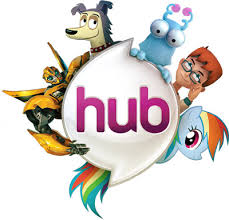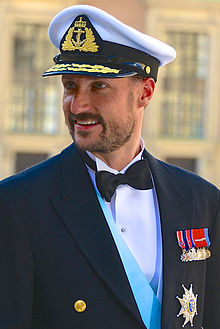Wednesday 4 December 2013
Cell-o-mania
Wednesday 20 November 2013
TECHNOLOGY HUB.
What is technology Hub?
 Introduction:
Introduction:
A special type of network device called the hub can be found in many home and small business networks. Though they've existed for many years, the popularity of hubs has exploded recently, especially among people relatively new to networking. Do you own a hub, or are you considering purchasing one? This article explains the purpose of hubs and some of the technology behind them
General Characteristics of Hubs:
A hub is a small rectangular box, often made of plastic, that receives its power from an ordinary wall outlet. A hub joins multiple computers (or other network devices) together to form a single network segment. On this network segment, all computers can communicate directly with each other. Ethernet hubs are by far the most common type, but hubs for other types of networks such as USB also exist.
 A hub includes a series of
ports
that each accept a network cable. Small hubs network four computers.
They contain four or sometimes five ports, the fifth port being reserved
for "uplink" connections to another hub or similar device. Larger hubs
contain eight, 12, 16, and even 24 ports.
A hub includes a series of
ports
that each accept a network cable. Small hubs network four computers.
They contain four or sometimes five ports, the fifth port being reserved
for "uplink" connections to another hub or similar device. Larger hubs
contain eight, 12, 16, and even 24 ports.
Technically speaking, three different types of hubs exist:
Intelligent hubs add extra features to an active hub that are of particular importance to businesses. An intelligent hub typically is stackable (built in such a way that multiple units can be placed one on top of the other to conserve space). It also typically includes remote management capabilities via SNMP and virtual LAN (VLAN) support.
 Hubs remain a very popular device for small networks because of their
low cost. A good five-port Ethernet hub can be purchased for less than
$30 USD. USB hubs cost only a bit more.
Hubs remain a very popular device for small networks because of their
low cost. A good five-port Ethernet hub can be purchased for less than
$30 USD. USB hubs cost only a bit more.
A special type of network device called the hub can be found in many home and small business networks. Though they've existed for many years, the popularity of hubs has exploded recently, especially among people relatively new to networking. Do you own a hub, or are you considering purchasing one? This article explains the purpose of hubs and some of the technology behind them
General Characteristics of Hubs:
A hub is a small rectangular box, often made of plastic, that receives its power from an ordinary wall outlet. A hub joins multiple computers (or other network devices) together to form a single network segment. On this network segment, all computers can communicate directly with each other. Ethernet hubs are by far the most common type, but hubs for other types of networks such as USB also exist.
Key Features of Hubs:
Hubs classify as Layer 1 devices in the OSI model. At the physical layer, hubs can support little in the way of sophisticated networking. Hubs do not read any of the data passing through them and are not aware of their source or destination. Essentially, a hub simply receives incoming packets, possibly amplifies the electrical signal, and broadcasts these packets out to all devices on the network - including the one that originally sent the packet!Technically speaking, three different types of hubs exist:
- passive
- active
- intelligent
Intelligent hubs add extra features to an active hub that are of particular importance to businesses. An intelligent hub typically is stackable (built in such a way that multiple units can be placed one on top of the other to conserve space). It also typically includes remote management capabilities via SNMP and virtual LAN (VLAN) support.
Wednesday 6 November 2013
Bluetooth fever.
Bluetooth Fever!!
Bluetooth is a wireless technology standard for exchanging data over short distances (using short-wavelength radio transmissions in the ISM band from 2400–2480 MHz) from fixed and mobile devices, creating personal area networks (PANs) with high levels of security. Created by telecom vendor Ericsson in 1994,[2] it was originally conceived as a wireless alternative to RS-232 data cables. It can connect several devices, overcoming problems of synchronization.Bluetooth is managed by the Bluetooth Special Interest Group, which has more than 19,000 member companies in the areas of telecommunication, computing, networking, and consumer electronics.[3] Bluetooth was standardized as IEEE 802.15.1, but the standard is no longer maintained. The SIG oversees the development of the specification, manages the qualification program, and protects the trademarks.[4] To be marketed as a Bluetooth device, it must be qualified to standards defined by the SIG.[5] A network of patents is required to implement the technology, which is licensed only for that qualifying device.
Name and logo:
The word "Bluetooth" is an anglicized version of the Scandinavian Blåtand/Blåtann, the epithet of the tenth-century king Harald I of Denmark and parts of Norway who united dissonant Danish tribes into a single kingdom. The idea of this name was proposed in 1997 by Jim Kardach who developed a system that would allow mobile phones to communicate with computers (at the time he was reading Frans Gunnar Bengtsson's historical novel The Long Ships about Vikings and king Harald Bluetooth).[6][7] The implication is that Bluetooth does the same with communications protocols, uniting them into one universal standard.[8][9][10] The Bluetooth logo is a bind rune merging the Younger Futhark runes
Wednesday 30 October 2013
E-man comic character
E-Man is a fictional comic book superhero created by writer Nicola Cuti and artist Joe Staton for Charlton Comics in 1973. Though the character's original series was short-lived, the lightly humorous hero has become a cult-classic sporadically revived by various independent comics publishers.

The stories were humorous and lighthearted, in the style of Plastic Man, especially as E-Man could form himself into anything he wanted.
Backup features were Cuti and Tom Sutton's "The Knight", starring a superspy agent of C.H.E.S.S.; Joe Gill and Steve Ditko's "Liberty Belle"; two stories of writer-artist Ditko's superhero "Killjoy"; the time-traveling "Travis", by Cuti and Wayne Howard; and, in the color-comics debut of John Byrne, three stories of "Rog-2000", written by Cuti and starring a wiseacre, cigar-smoking robot Byrne had created in his fan-artist days.
E-man Biography:
 E-Man is a sentient packet of energy thrown off by a nova.
Traveling the galaxy he learned about life, how to duplicate the
appearance of life, and good and evil. Reaching Earth, he met exotic dancer/grad student Katrinka Colchnzski, also known as Nova Kane (novocaine), and formed himself into a superhero dubbed E-Man, with a civilian identity dubbed "Alec Tronn" (electron). His emblem was the famous mass-energy equivalence formula "E=mc2",
and his powers included firing energy blasts from his hands, changing
his appearance, and transforming part or all of his body into anything
he could envision (e.g., turning his feet into jet engines so he could fly).
E-Man is a sentient packet of energy thrown off by a nova.
Traveling the galaxy he learned about life, how to duplicate the
appearance of life, and good and evil. Reaching Earth, he met exotic dancer/grad student Katrinka Colchnzski, also known as Nova Kane (novocaine), and formed himself into a superhero dubbed E-Man, with a civilian identity dubbed "Alec Tronn" (electron). His emblem was the famous mass-energy equivalence formula "E=mc2",
and his powers included firing energy blasts from his hands, changing
his appearance, and transforming part or all of his body into anything
he could envision (e.g., turning his feet into jet engines so he could fly).
E-Man is a fictional comic book superhero created by writer Nicola Cuti and artist Joe Staton for Charlton Comics in 1973. Though the character's original series was short-lived, the lightly humorous hero has become a cult-classic sporadically revived by various independent comics publishers.

Charlton Comics:
The character premiered in E-Man #1, the first of ten issues (cover-dated Oct. 1973 - Sept. 1975) published by the Derby, Connecticut-based Charlton Comics. For the last four, artist Staton created painted covers, a comics rarity at the time.The stories were humorous and lighthearted, in the style of Plastic Man, especially as E-Man could form himself into anything he wanted.
Backup features were Cuti and Tom Sutton's "The Knight", starring a superspy agent of C.H.E.S.S.; Joe Gill and Steve Ditko's "Liberty Belle"; two stories of writer-artist Ditko's superhero "Killjoy"; the time-traveling "Travis", by Cuti and Wayne Howard; and, in the color-comics debut of John Byrne, three stories of "Rog-2000", written by Cuti and starring a wiseacre, cigar-smoking robot Byrne had created in his fan-artist days.
E-man Biography:
 E-Man is a sentient packet of energy thrown off by a nova.
Traveling the galaxy he learned about life, how to duplicate the
appearance of life, and good and evil. Reaching Earth, he met exotic dancer/grad student Katrinka Colchnzski, also known as Nova Kane (novocaine), and formed himself into a superhero dubbed E-Man, with a civilian identity dubbed "Alec Tronn" (electron). His emblem was the famous mass-energy equivalence formula "E=mc2",
and his powers included firing energy blasts from his hands, changing
his appearance, and transforming part or all of his body into anything
he could envision (e.g., turning his feet into jet engines so he could fly).
E-Man is a sentient packet of energy thrown off by a nova.
Traveling the galaxy he learned about life, how to duplicate the
appearance of life, and good and evil. Reaching Earth, he met exotic dancer/grad student Katrinka Colchnzski, also known as Nova Kane (novocaine), and formed himself into a superhero dubbed E-Man, with a civilian identity dubbed "Alec Tronn" (electron). His emblem was the famous mass-energy equivalence formula "E=mc2",
and his powers included firing energy blasts from his hands, changing
his appearance, and transforming part or all of his body into anything
he could envision (e.g., turning his feet into jet engines so he could fly). Wednesday 23 October 2013
Advantages and disadvantages of "Internet"
Advantages and Disadvantages
of Internet.
Advantages:
- People can communicate with each other easily from any corner of the world.
- We can complete our tasks, projects and presentations with lots of good information.
- People can get education & knowledge from internet.
- If we want to learn any recipe, we can see it on internet.
- We can also use social networking websites ie; Facebook, Twitter, Tumblr e.t.c
- Strangers can see our personal information on social network.
- People can also send you unwanted e-mails,usually SPAMMING.
- By using internet, there is also affect on our computer like viruses or malware.
- Age inappropriate things are available on Internet.

- Some people are also addicted towards Internet.


Sunday 20 October 2013
Global Dignity day celebrations in Beaconhouse
Global dignity day was
celebrated at a very high level in baconhouse every year.This year also global
dignity was celebrated at very high level.A special assembly took place where
principle gave thank you cards and flowers to the junior staff,which starts
their work at 6 0clock Am and works till 4 pm.They provide help and support to
teachers and students and are responsible for school cleanliness.
Class VII And VIII
students performed on roll plays which were based on dignity.All middle school
watched these roll plays in auditorium.
Class VI students
visited zoo and rinsing sun institute and they created posters on their visit
which were later displayed on the mobile boards.
Class VII students
created posters and slogans on dignity day.
Dignity day should be
celebrated every year in account to respect human dignity and each and every
person should take part in dignity day celebrations, In schools children should
be given introduction about what is dignity and how torespect dignity of others
Thursday 10 October 2013
What is "Dignity Day?"
Global Dignity is an independent, non-political organization. Their project is the universal right of every human being to lead a dignified life. The organization was established in 2006 by Crown Prince Haakon of Norway, John Hope Bryant and Pekka Himanen.
The organization is working towards dignity for people creating a global conversation about dignity, promoting dignity-based leadership discussing the issue of dignity with young people. An annual Dignity Day on October 20 was arranged for the first time in 2008. School classes are invited to discuss Dignity - what it means to them and their relationship with other people. Per 2011 schools in more than 40 countries had participated in the project.
The Dignity project has formulated five dignity principles:
- Every human being has a right to lead a dignified life.
- A dignified life means an opportunity to fulfil one’s potential, which is based on having a humane level of health care, education, income and security.
- Dignity means having the freedom to make decisions on one’s life and to be met with respect for this right.
- Dignity should be the basic guiding principle for all actions.
- Ultimately, our own dignity is interdependent with the dignity of others.
These People organised the "Dignity Day"
Crown Prince Haakon (Of Norway):
John Hope Bryant:

Pekka Himanen:

Quotes On "Dignity Day"
Subscribe to:
Posts (Atom)





